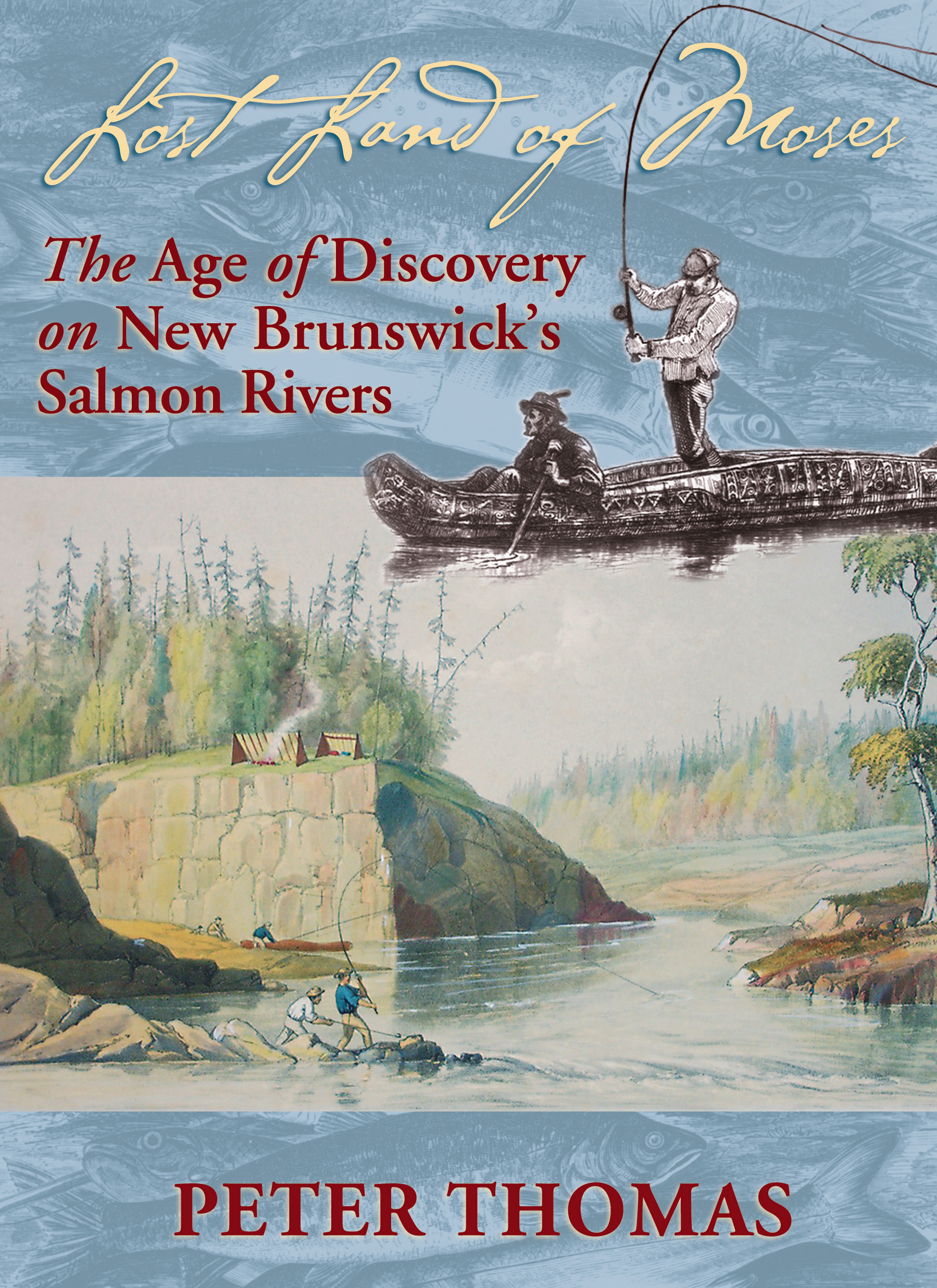Your cart is currently empty!
A note to US-based customers: All Lit Up is pausing print orders to the USA until further notice. Read more
Lost Land of Moses
In the middle of the nineteenth century, most of New Brunswick was pristine wilderness. But by the end of the century the map of eastern Canada would be changed forever by the sport of salmon angling, and by the adventurers, gentlemen, rakes, and royalty, who were drawn together in their lust for the finest of fish.
In Lost Land of Moses, Peter Thomas recounts the dramatic changes that occurred between 1840 and 1880, as strenuous wilderness idylls became the Victorian equivalent of adventure tourism. To illustrate his story, he has chosen more than fifty engravings, cartoons, maps, and photographs from archival collections and 19th century books and magazines.
Moses Perley was a New Brunswick lawyer with a gift for contagious enthusiasm. Between 1839 and 1841, he published a series of articles in the British magazine Sporting Review describing his canoe trips with Mi’kmaq or Maliseet companions. The articles inspired a generation of young adventurers to visit New Brunswick. Soon, these young British gentlemen were joined by the rich and famous, as steamships brought fishermen right to the rivers, and needs were supplied by professional outfitters.
In 1879, the Marquess of Lorne, then Governor General of Canada, and his daring wife, Princess Louise, spent two glorious weeks on the Restigouche, complete with a vice-regal retinue, a houseboat called Great Caesar’s Ghost, and carpeted tents. The New Brunswick salmon waters were open for business. Many of the consequences of this influx were dire. Leases were let on the rivers, allowing only wealthy people to fish them. They founded clubs, built expansive camps, and hired wardens to patrol the pools. Most troubling of all, by the 1880s, the Mi’kmaq and Maliseet, at first respected as knowledgeable guides into their own territory, had been reduced to being perceived as mere servants. Moses Perley never foresaw the changes that large numbers of visitors would bring to New Brunswick’s teeming salmon rivers. Lost Land of Moses reveals the consequences of his crusade to lure fly fishermen to New Brunswick. For good and ill, the legacy of those forty years is with us today.
Moses Perley, a lawyer with the gift of contagious enthusiasm, was the first promoter of salmon angling in New Brunswick. In the early 1840s, he dangled sporting adventure of unimagined richness before the eyes of young men “blessed with youth, health, and an ardent temperament,” The British and American anglers who rose to Perley’s challenge formed the vanguard of progress. Steamships and coach roads brought them directly to the rivers, and, by 1876, the Intercolonial Railway delivered anglers almost to the edge of the salmon pools.
The Governor General of Canada, the Marquess of Lorne, spent two weeks on the Restigouche with the irrepressible Princess Louise and their vice-regal retinue, fly-fishing by day, and by night reposing in carpeted tents. Moses Perley didn’t foresee the results of luring anglers to New Brunswick’s teeming rivers. Before 1890, his romantic wilderness dream had metamorphosed into the reality of leased waters and elaborate permanent camps for the wealthy few, and the reduction of the native guides from respected companions to servants. In Lost Land of Moses, Peter Thomas illuminates Perley’s mixed legacy.
“A brilliant synthetic history of 19th century salmon fishing on New Brunswick waters… lively, witty, and entertaining, written with great skill and clarity… This modestly priced paperback should be read far and wide by everyone interested in the history of salmon fishing as a sport.”
– Atlantic Salmon Journal
“An angler’s delight, a real guy book.”
– Books in Canada
“Clearly a labour of love… In its restoration of a whole literature from nineteenth-century Canada, Lost Land of Moses is a great success, filled with beautiful writing, much of it Thomas’s own.”
– Canadian Historical Review
You must be logged in to submit a review.
Details
Dimensions:
254 Pages
7.75in * 5.5in * 0.64in
370gr
Published:
April 01, 2001
Publisher:
ISBN:
9780864922939
Featured In:
Language:
eng
No author posts found.


